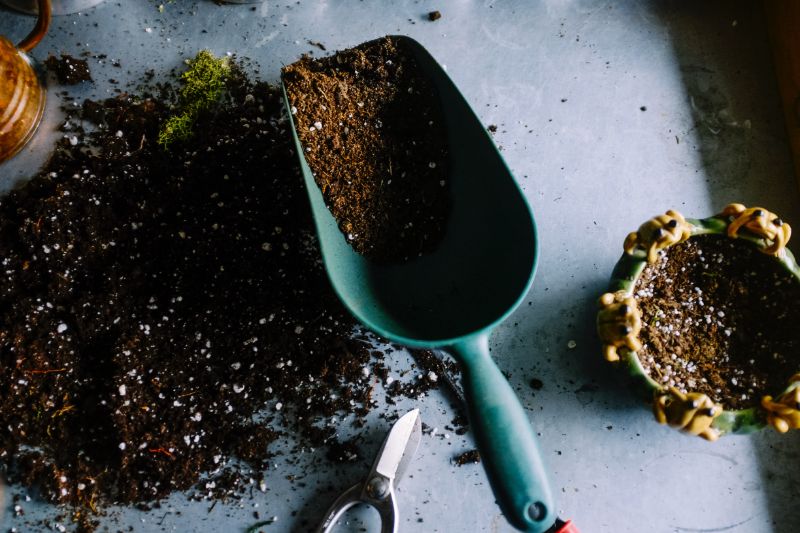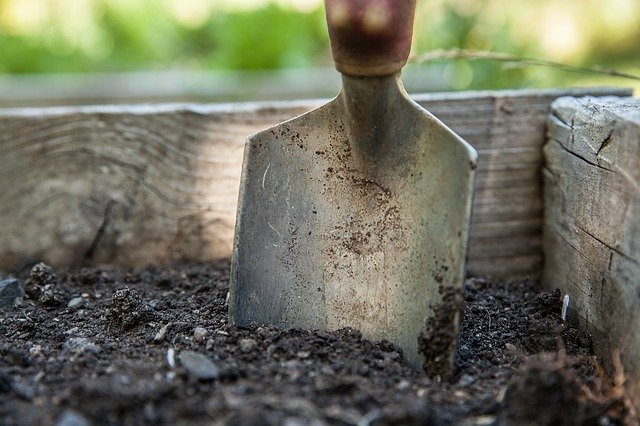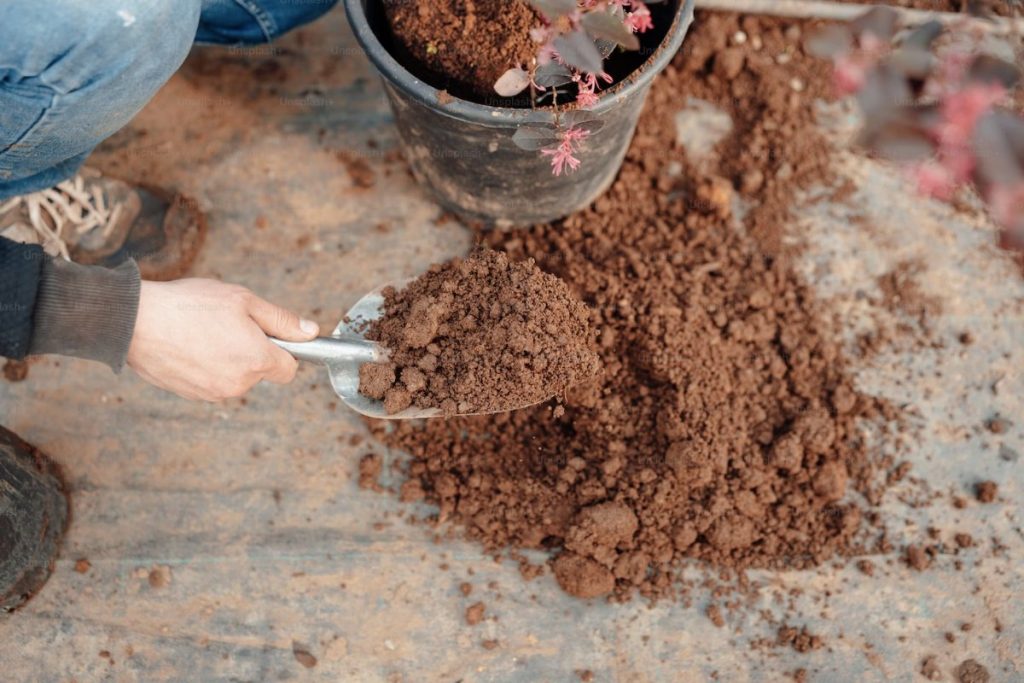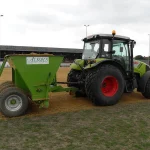Lowering pH in Soil
Are your plants struggling to grow, with yellowing leaves and stunted growth? The culprit might be the pH level of your soil. Soil pH, which measures soil acidity or alkalinity, significantly impacts plant health. High pH levels, indicating alkaline soil, can affect nutrient absorption and stress your plants.
We are going to uncover the practical strategies for both testing pH in soil and lowering soil pH organically to foster an ideal environment for robust plant growth. We’ll explore three effective methods, while also providing guidance on performing accurate soil pH tests.
Contents:
- How Does pH in Soil Affect Plants?
- How to Test pH in Soil
- How to Decrease Soil pH
- Can You Test The pH of Your Soil by Yourself?
- How Do I Know if My Soil pH is off?
- What pH Should Garden Soil be?

How Does pH in Soil Affect Plants?
Soil pH affects plant growth and influences the availability of essential nutrients to plants. When soil pH is too high (alkaline) or too low (acidic), it can hinder a plant’s ability to absorb vital nutrients from the soil. In highly alkaline soil, essential nutrients like iron and manganese become less accessible, leading to nutrient deficiencies.
Acidic soil can result in the toxic accumulation of elements like aluminium. Therefore, maintaining the right pH level in the soil ensures optimal nutrient uptake and overall plant health.
How to Test pH in Soil
Testing soil pH before attempting to lower it is essential for practical reasons. Soil pH significantly impacts nutrient availability, microbial activity, and overall soil quality.
Without knowing the initial pH, you might make unnecessary adjustments that could harm your plants. Lowering soil pH organically when it’s already suitable for your specific plants may lead to adverse effects on their growth.
1. Dig for a Soil Sample
To dig for a soil sample, use a trowel or shovel to excavate a small, representative portion of soil from the area you want to test. Make sure to reach a depth of about 6 inches, as pH levels can vary at different soil depths.
2. Remove Debris From the Soil
Removing any debris from the soil ensures that the soil is free from unwanted materials such as rocks, sticks, leaves or any other foreign matter as it can affect the accuracy of the PH assessment. This guarantees that your soil sample is pure and representative of the area, facilitating precise pH measurements and more reliable results.
3. Combine the Soil and Water Thoroughly
The next step in the soil pH testing process involves mixing the soil with distilled water to create a slurry. This step is important to ensure uniformity in the soil sample and accurate pH measurement.
4. Add the Vinegar
To test the soil pH accurately, add a small amount of vinegar to the slurry. This helps to reveal the soil’s acidity or alkalinity level. If the soil is alkaline, meaning it has a high pH level, you’ll see fizzing or bubbling in the mixture as the vinegar reacts with the alkaline soil.
This fizzy reaction serves as a clear indicator that the soil’s pH is on the higher side of the scale, signalling the need for pH adjustment if you’re aiming for a more neutral pH or slightly acidic pH level, which is often preferable for many plants.
5. Repeat the Process Again
Repeating the soil pH test in different areas of your garden is essential for accuracy. Soil pH can vary within your garden due to various factors. By conducting the test in multiple locations, you get a better understanding of the overall soil pH variation, which is crucial for making informed decisions about soil amendments.
This practical step ensures that any pH adjustments are specific to the needs of different parts of your garden, leading to healthier plant growth and better results.
6. Add the Baking Soda
To check for acidic soil (low pH), replace vinegar with 125ml of baking soda. If the mixture fizzes, it indicates acidic soil. Baking soda reacts with soil acidity, producing bubbles, indicating soil acidity for your gardening needs.

How to Decrease Soil pH
Decreasing soil pH is crucial for fostering optimal conditions for plant growth. Soil pH directly influences nutrient availability, and many essential nutrients become less accessible in alkaline (high pH) soil.
By lowering soil pH organically to a more neutral or slightly acidic range, plants can efficiently absorb vital nutrients like nitrogen, phosphorus, and iron, promoting healthier root development, robust foliage, and increased crop yields. Lowering pH in the soil helps create an environment for specific plant varieties that thrive in slightly acidic conditions, ensuring a flourishing garden or crop production.
Elemental Sulphur
To lower pH in soil using elemental sulfur, first, assess the soil’s pH level, ensuring it’s greater than 5.5. If it exceeds this threshold, apply 1-3 pounds per 100 square feet of elemental sulfur to decrease the soil pH to 4.5. The aim is to reduce the soil pH to approximately 4.5, which creates a more acidic environment suitable for certain plants.
Incorporate the recommended amount of elemental sulfur into the soil and mix it thoroughly. Over time, as the sulfur reacts with soil moisture and microorganisms, it will gradually lower soil pH organically, promoting improved nutrient availability and optimal growing conditions for acid-loving plants.
Make sure to regularly monitor the pH to ensure it reaches the desired level for your specific crops or garden. After a few weeks, retest the soil pH to see the effects of the sulfur application. Be patient, as the pH may take some time to change.
Aluminium Sulphate
When lowering pH in soil using aluminium sulphate, typically you’ll need 1-2 pounds per 10 square feet. Lightly and thoroughly incorporate the necessary amount of aluminium sulfate into the soil.
For effective results, repeat these applications on a monthly basis until the total recommended quantity of elemental sulfur has been successfully incorporated into the soil. This gradual process will help lower the pH, creating a more acidic soil environment conducive to the growth of plants that thrive in such conditions.
Ferrous Sulphate
When lowering the pH in soil using ferrous sulfate, first, determine if the soil pH is above 6.0. If it is, opt for ground sulfur (flowers of sulfur) or ferrous sulfate. Typically, you’ll need approximately you’ll need 2-3 pounds per 100 square feet.
Mix this sulfur into the soil thoroughly to effectively lower the pH from 6.0 to 5.5, making a half-point reduction in soil acidity. This adjustment creates a more suitable environment for plants that thrive in slightly acidic conditions. After several weeks, perform another soil pH test to evaluate the results of your treatment.
Can You Test The pH of Your Soil by Yourself?
Yes, you can test the pH of your soil your soil by yourself easily. There are DIY soil pH testing kits and guides available. Soil pH testing kits allow you to collect soil samples from your garden, mix them with water, and then use the provided tools to measure the pH level.
You can also send soil samples to a professional laboratory for more accurate results.
How Do I Know if My Soil pH is off?
To find out whether your soil pH is off, observe common visual symptoms in your plants such as stunted growth and leaves that are dark green but tinged with red, bronze, or purple discolouration. These symptoms often signal plant nutrient deficiencies, particularly in essential elements like phosphorus and calcium carbonate, which become less available to plants in acidic soil.
What pH Should Garden Soil be?
The ideal pH for garden soil is around 6.5. This slightly acidic to neutral soil pH level is generally considered optimal for most home types of garden soils such as multi-purpose topsoil, vegetable and fruit topsoil and border blend topsoil.
This pH level provides a balanced environment where essential nutrients are readily available to plants, promoting healthy growth and overall plant vitality. However, it’s important to note that specific plants may have varying pH preferences, so it’s advisable to adjust the soil pH accordingly based on the types of plants you are growing.
Summary
Achieving the desired pH for your garden soil is an easy process that can benefit your plants. Whether you choose to use organic matter, sulfur, aluminium sulfate, or specialised fertilisers, the key is to take it slow and steady, making gradual adjustments while keeping an eye on your plant’s health.
At Alsoils, we offer a variety of soil types and topsoil solutions designed to enhance plant growth. Our product range is suitable for various applications, including garden beds, borders, vegetable patches, and allotments.
For any further questions, get in touch today.





